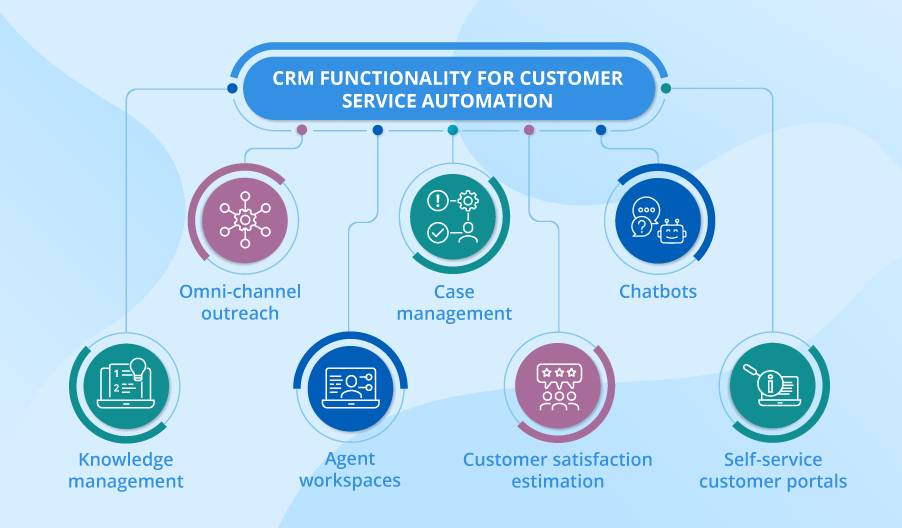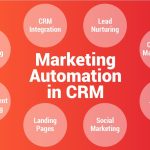“To give real service, you must add something which cannot be bought or measured with money, and that is sincerity and integrity.”
− Douglas Adams
Service automation is the process that works as a supporting system for the service staff and managers to achieve their work related objectives. Infrastructure, Data, Devices, and Software are the key components of service automation.

There are five major domains of service automation −
● Contact centers − They are the main basis of customer relationship. They address customer queries via Email, telephone, instant messaging, SMS, or fax. They have databases, Automatic Call Diversion (ACD) system, and voice recording system. The staff responds to Emails and chats with customers regarding problem and solution.
● Call centers − They are a part of contact centers which majorly handle inbound and outbound calls. They perform typically more generic duties, deal with people and calls which are outside the business, and at times can make outgoing calls. The staff needs to have excellent patience, and reading and listening skills.
● Help desks − They are internal to the business. They are oriented towards supporting the business staff. Helpdesks generally provides diagnostic and troubleshooting help.
● Field service − The service engineers or technicians visit customer’s workplace or home to install, repair, or maintain the products. They visit factories, workshops, warehouses, and offices to provide service. They also help the customer to specify the product, test, and demonstrate it after installation.
● They need to access and update the data from their computing devices. Technology businesses such as Aesta, Corrigo, Oracle, Ventyx, etc. provide powerful software applications to cater the need of service force.
● Web-based Self Service − Some businesses offer solutions to the customers’ problems on the web itself. The customers can buy products online, track installation and service issues, and conduct online diagnostics.
Benefits of Service Automation
The benefits of implementing service automation are −
● Enhanced service processes − Service requests are attended quickly and routed to appropriate service staff.
● Enhanced productivity − Since optimal number of customers are scheduled, the service time take is used at its best thus increasing productivity.
● Increased customer experience − Since service staff has full access to the service history, they ensure that right service is delivered to the customer at appropriate service status. This improves customer satisfaction.
Service Automation Software Applications
There are large number of service automation software applications available in the market. Some important ones are as follows −
● Activity management − It enables the service staff to track workload, assign priorities to the service according to urgency, set appointment alerts, set alarms on attended but unresolved services, etc.
● Agent management − It enables businesses to manage globally dispersed, employed or outsourced, operating in different time zones service agents.
● Case management − It ensures each customer enquiry or issue is routed to appropriate agent or technician according to the agent’s competencies and skills. When the customer raises double ticket by email or otherwise for an issue, the software automatically communicates with the customer at various stages of resolving the issue. It enables the technicians to diagnose and close the case quickly.
● Customer self-service − It enables for the customers to track the packages they sent or expecting to receive from courier service. The customers can transact online, track their shipments, and pay for the service, all by themselves.
● Email Response Management System (ERMS) − It provides automated and customized Email responding to large volume of customers. It also provides multilingual spellchecker, and Email analytics and templates.
● Scheduling − It enables to schedule the service technician’s work on the basis of hours, days, or months. It deals with the record of technician details, skills, availability of working, charges taken, etc. It also records customer details, accessing hours, location, distance, issue, and service level agreement.
● Inbound Communication Management (ICM) − It is uses by contact centers for equal distribution, queuing, and routing of incoming communication via phones, Emails, SMSs, Chat, IMs, etc.
● Outbound Communication Management (OCM) − It enables service staff to acknowledge service requests, invoicing for out of warranty services, advising on pre-servicing tasks to the customer, track the service tasks, and post-service communication with the customer.
● Job management − It helps field technicians or service engineers to manage their work related issues such as taking preventing measures against failure, system servicing, recording meter readings, installation, upgradation, and inspection.
● Spare parts management − It serves the field technicians with the data about the number of parts available. The technicians can also check the availability of parts with fellow technicians or at regional warehouse. It also enables to purchase, transfer and manage faulty parts so that when they attend to resolve a service issue, they are completely equipped.


